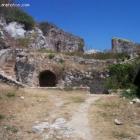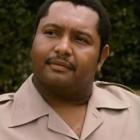ADVERTISEMENT
History
Central Railway in Port-au-Prince, Cincinnatus Leconte government
Here is a picture of the Central Railway in Port-au-Prince at Rue du Quai during the government of Cincinnatus Leconte
Jean-Jacques Dessalines Michel Cincinnatus Leconte (born September 29, 1854) was the Haitian President between (August 1911 until his death on 8 August 1912). He was the son of Cinna Leconte and Florelia Raphael and the great grandson of the Jean-Jacques Dessalines, the founding father of Haiti and the autocratic first ruler of an independent Haiti under the 1801 constitution. Cincinnatus Leconte was a lawyer by profession who served as the Minister of the Interior to the President Pierre Nord Alexis. In 1908, when a revolt deposed Alexis, he went into exile in Jamaica and C. Antoine Simon became the President. He came back from exile in 1911 and gathered a rebellion force that ousted President Simon and on August 7, 1911, Leconte unanimously became the President for a seven year term with a set salary of $24,000 a year. His presidency is often considered as one of the efficient and cleanest government that Haiti ever had. He took many positive steps and numerous reforms. He increased teachers' pay, paved the streets, installed telephone lines, reduced the size of the army, etc., and they are only a few to name. He introduced a controversial discriminatory policy targeting "Syrian" population (actually most of them were Lebanese Christians) to protect Haitians from disloyal competition of the Easterners with uncertain nationality.
Mary Magdalene, companion of Alexandre Petion
Here is a picture of Mary Magdalene. She was thecompanion of Haitian President Alexandre Petion.
Alexandre Pétion was a moderate mixed-race revolutionary leader. After the death of Dessalines, Alexandre Pétion was elected as the president of southern Haiti in 1807 and reelected in 1811 and fearing a lack of political power, he turned his post into President for Life in 1816. He seized the commercial lands from rich gentry and distributed that to his supporters in small plots. However, this resulted huge loss in export revenues from the agricultural commodities and the farmers became full subsistence farmers. His outlook was influenced by the ideals of French liberalism, he believed in the importance of education in human life. Today, we can see his portrait on the Haitian 500 gourdes currency.
He joined the French army to reconquer the colony, but became one of the first Haitian officers to revolt against the French. He revolted against the rule of Jean-Jacques Dessalines who played a major role in ousting the French. Dessalines was a black nationalist ruler and
Letter from Alexandre Petion 1816
Here is a letter written by Haitian President Alexandre Petion in 1816
Alexandre Sabès Pétion (April 2, 1770 -March 29. 1818) is remembered by the Haitians as one of the greatest independence leaders, a liberal ruler and the first President (1807) of the Republic of Haiti till his death. He was born as Anne-Alexandre Sabes. According to Dantes Bellegarde, a Haitian historian, "Petion", was a nickname given to him. He is also remembered by the Latin Americans (Venezuela, Colombia and other countries in South America) for his support and sanctuary offered to the Venezuelan military and political leader Simón Bolívar during his struggle for independence from Spain in 1815.
Alexandre Pétion was born in Port-au-Prince to a wealthy French and a Mulatresse Haitian mother and studied at the Military Academy in Paris, but came back to take part in the expulsion of the British (1798-99) from Saint-Domingue. He served the French colonial army before the French Revolution. Thereafter, before joining the force of mulatto general André Rigaud, he joined the revolutionary troops of Toussaint Louverture. André Rigaud had much respect for Toussaint Louverture as the leading general of the former black slaves of the North but did not want to concede power in the South to him.
Slavery during Colonization Period
This is a picture where a Black woman is being marked with a hot iron just like a horse during the slavery period in Saint Domingue, now Haiti.
Haiti is still suffered from the period of slavery that was established under French colonial rule. Under the slavery period, the mulatto descendants became the elite in Haiti after the revolution. The division between the Haitian Mulato and the Black was already in strong. Many of the mulato used their social privileges to acquire wealth, and land. During the colonization period, white masters used brutal methods to terrorize the slaves and keep them powerless.
Haiti The Cereminy Of Bois Caiman - A Haitian History
Here is a picture the ceremonie of Bois caiman. It is an intricate part of our fight for our independence. Some people feel that it was a voodoo ceremony and should not be included in our history
The Haitian revolution revers the entire cource of the world. The complicity of Frence and the United States after Haiti fought for his independence
Haiti The Poorest Country In The Hemisphere By Design - A Haitian History
Here is a picture representing the freedom Haiti took from France. That is when the Haitians declared themselves free from the French colonization
Although we are still paying the price for who we are, it is important to know our real place in history so that we can at least teach our children about our history
Fort de Joux in France in Honor of Toussaint Louverture with Haitian Flag
Here is a picture of Fort de Joux in France where Toussaint Louverture spent his list few years in prison under harsh condition. This day, it is another story all together. He is now considered a hero and both Haitians and French want to claim him.
Toussaint Louverture was known to his contemporaries as "the Black Napoleon". To abolish slavery from Haiti he fought against the best-trained European forces, including armies from France, England and Spain and France. He is the only successful revolutionary slave leader in modern history and the first Black to become the governor of a colony. He allied with France and became a dominant political and military leader in the French colony; ruled Saint Dominque as an independent state. When he drafted a constitution emphasizing abolition of slavery, he earned the ire of Napoleon Bonaparte. He was captured and on August 25, 1802, sentenced to a cold, isolated cell in the French mountain prison at Fort de Joux so that he would be forgotten from his countrymen behind his secluded prison. He died of pneumonia in his solitary cell within his seven months of captivity on April 7, 1803. He wrote a memoir during his confinement where he compared Napoleon's plan of forceful limiting him with phrases as--"cut out one's tongue and tell him to talk","bury a man alive". On October 29, 2014, the Haitian President Michel Martelly paid tribute before the statue of this Haitian independence hero at Fort de Joux in France and placed a Haitian flag in his honor.
Visit by Michel Martelly in Fort de Joux in France in Honor of Toussaint Louverture
Here is a picture of Haitian President Michel Martelly on October 29, 2014 as he stands in front od the statue of Toussaint Louverture in Fort de Joux in France in Honor of this great Haitian hero, known internationally
Toussaint Louverture was a self educated person and a former slave who rose to become the leader of the only successful slave uprising in modern history. He joined the slave insurgency and quickly with efficiency became the military secretary to Georges Biassou, one of the insurgency's leaders. When his leaderships allied itself with Spain against France, he followed. In 1794, when Spain and Britain threatened France to take control of the island, the French acted to preserve its colonial rule and to gain the loyalty of the black population, granted citizenships, rights and freedom to all blacks within the empire. L'Ouverture allied with France against Spain during 1794 to 1802, and became a dominant political and military leader in the French colony. By 1801, he ruled Saint Dominque as an independent state. He drafted a constitution emphasizing the abolition of slavery and appointed himself governor for "the rest of his glorious life. In 1802, Napoleon organized a large military expedition and dispatched his brother-in-law, Charles Leclerc, to capture L'Ouverture and return the island to slavery under French control. Toussaint was captured and was shipped to Fort de Joux for imprisonment. It was there where he died of pneumonia in a solitary cell on April 7, 1803. On Saturday, November 1, 2014, President Martelly paid tribute to this great to the independence hero, at Fort de Joux and at the initiative of the French authorities, he was invited to 'meditate' to the dungeon of Fort de Joux, where Toussaint Louverture died.
Toussaint Louverture's Statue With French and Haitian Flag at Fort de Joux
Here is a statue of the Haitian hero Toussaint Louverture standing proudly in Fort de Joux in France With French and Haitian Flag.
Francis Domenica Breda or Toussaint Louverture (1743-1803) as he was more popularly known, is one of the great leaders in the history of the Haitian revolution. He was born in a slave family and the first Black to become the governor of a colony. Toussaint was a self educated revolutionary who defeated Europe's best-trained forces, including armies from France, England and Spain and France. After securing its independence, Toussaint renamed St. Domingue as "Haiti" and his policy on abolition of slavery eventually aroused the ire of Napoleon Bonaparte. On June 7, 1802, He was captured in Saint Domingue by an act of deceit by a French General of Division named Jean Baptiste Brunet. Toussaint, who had never remained far from his warm sea-level Caribbean life, was transported to Fort de Joux in France by ship and sentenced to a cold solitary cell measuring 6,50 x 3,90 meters. He was one of the fort's most noted prisoner. He suffered from loneliness and died in the prison out of a certain malady of the lung. Today, the fort is a tourist site, tourists come to pay tribute to his statue at Fort de Joux gifted by Haiti to mark the bicentenary of his death. The statue has French and Haitian flags on both sides.
Michel Martelly, paid tribute at Fort de Joux - Toussaint Louverture
Here is a picture of the Haitian President Michel Martelly on October 31, 2014 in France as he was paying tribute at Fort de Joux to the Haitia Hero Toussaint Louverture.
Martelly Honors Memory of Louverture
President Martelly is the first Haitian head of state serving, who has ever visited the cell of General Toussaint Louverture at Fort de Joux, who died nine months before Haiti's liberation in January 1804.
Louverture has been honored with symbolic, commemorative, and institutional remembrances ever since his death.
President Martelly has called Louverture Haiti's "black Spartacus". First Lady Sophia described Louverture as ". . . one of the greatest humanists the world has ever known."


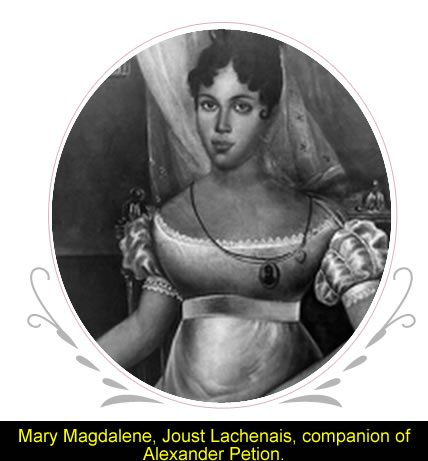
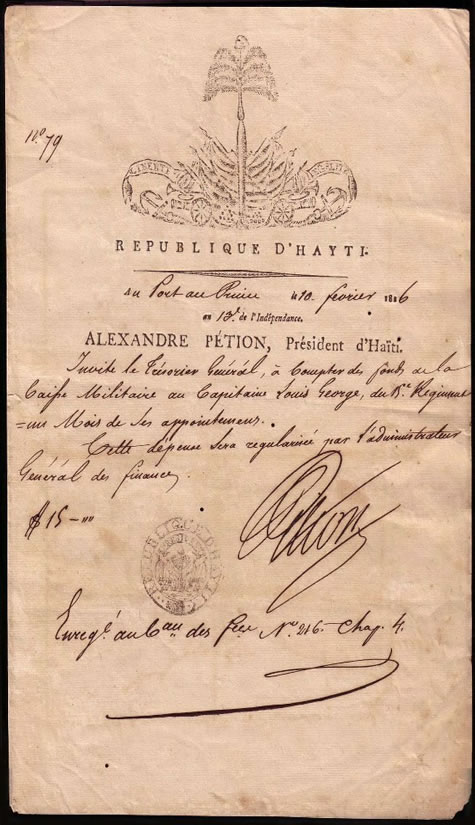
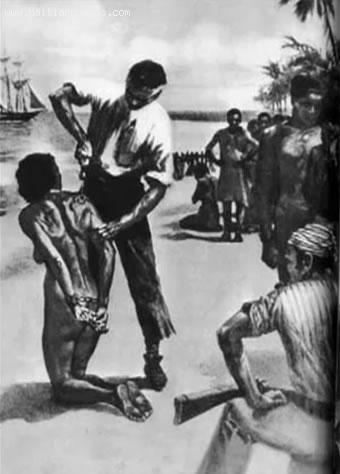
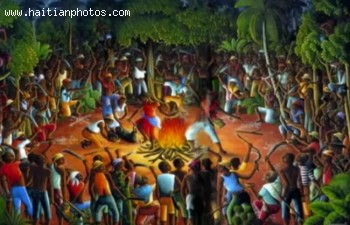
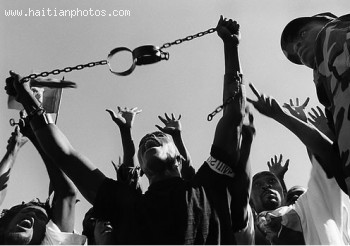

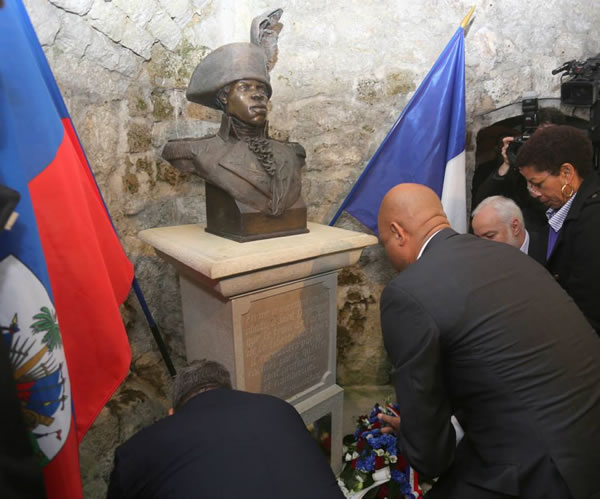
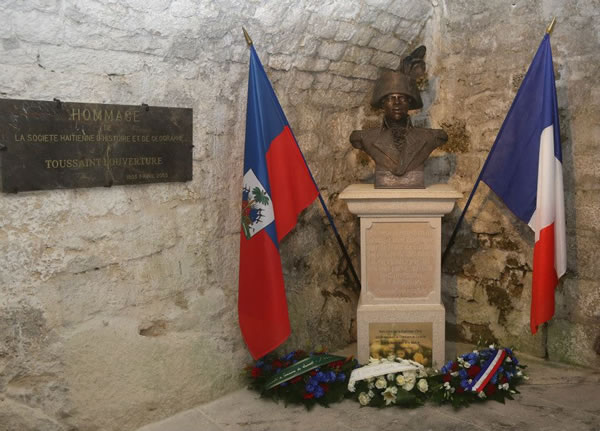
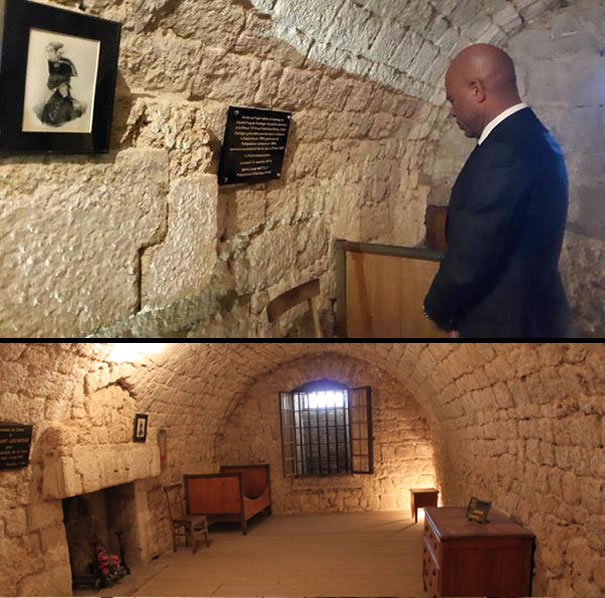
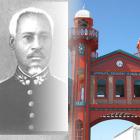 President Florvil Hyppolite Haiti's famed Iron Market
President Florvil Hyppolite Haiti's famed Iron Market 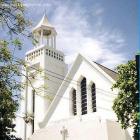 Nouveau College Bird in Port-au-Prince, Haiti
Nouveau College Bird in Port-au-Prince, Haiti  Histoire D'Haiti
Histoire D'Haiti 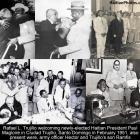 Rafael L. Trujillo welcoming Paul Magloire in Santo Domingo
Rafael L. Trujillo welcoming Paul Magloire in Santo Domingo 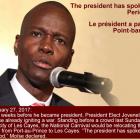 Jovenel Moise, the president has spoken. Period
Jovenel Moise, the president has spoken. Period  Commissioner Frantz Pierre indicted for accepting bribes
Commissioner Frantz Pierre indicted for accepting bribes  The Petro Caribe Challenge hashtag
The Petro Caribe Challenge hashtag  Dr. Michaëlle Amédée Gédéon is dead
Dr. Michaëlle Amédée Gédéon is dead 